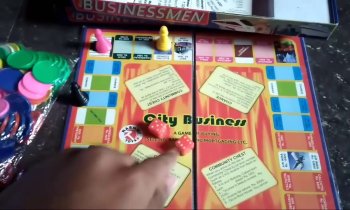Table of Contents
Roulette is a popular casino game that has captivated players for centuries. It is a game of chance that combines excitement, strategy, and the hope of winning big. While luck plays a significant role in determining the outcome of each spin, the mechanics behind the game are deeply rooted in mathematics. In this article, we will explore the intricate mathematics behind roulette and understand how probabilities and statistics shape the game.

The Basics of Roulette
Before delving into the mathematics, let's first understand the basics of roulette. The game consists of a spinning wheel with numbered compartments and a small ball. The wheel is divided into two main types: the European wheel and the American wheel. The European wheel has 37 compartments numbered from 0 to 36, while the American wheel has an additional 00 compartment, making it a total of 38.
Players place their bets by wagering on specific numbers, groups of numbers, or various other betting options available on the roulette table layout. Once the bets are placed, the croupier spins the wheel and launches the ball in the opposite direction. The outcome of the game is determined by the compartment in which the ball comes to rest. If you're looking to try your luck at the roulette table, it's important to choose a reputable and trustworthy casino. One reliable source to find legitimate roulette casinos is TopAustralianGambling's list of legit roulette casinos, which provides comprehensive reviews and recommendations for players in search of a reliable and enjoyable gambling experience.
Probability in Roulette
The foundation of understanding the mathematics of roulette lies in probability theory. Each spin of the wheel is an independent event, and the outcome of one spin does not affect the outcome of subsequent spins. Therefore, to calculate the probability of winning, we need to analyze the possible outcomes and their likelihoods.
If we consider the European wheel, there are 37 possible outcomes since there are 37 compartments. If you bet on a single number, the probability of winning on a single spin is 1/37, as there is only one winning number out of 37 possible outcomes. Similarly, if you bet on an even/odd number or red/black, your probability of winning is 18/37 since there are 18 winning outcomes out of 37.
It is important to note that the presence of the 0 compartment in the European wheel gives the house a slight edge. If the ball lands in the 0 compartment, all bets except those specifically placed on 0 will lose. This provides the casino with an advantage in the long run.
Statistical Analysis
To gain further insight into the mathematics behind roulette, statistical analysis is crucial. The law of large numbers states that as the number of trials increases, the experimental probability approaches the theoretical probability. This means that the more times you play roulette, the closer your results will be to the expected probabilities.
For example, if you were to bet on red in each spin of the European wheel, you would expect to win approximately 48.65% of the time based on the 18 red compartments out of 37 total compartments. However, in practice, due to statistical variance, your actual results may deviate from this expected value in the short term. Over a large number of spins, though, your winnings should converge to the expected value.
Expected Value and House Edge
Expected value is a concept that measures the average outcome of a random event. In roulette, the expected value is calculated by multiplying the probability of winning (or losing) by the amount won (or lost). For instance, if you bet $10 on a single number with a 1/37 probability of winning, the expected value of that bet is (-$10) × (36/37) + ($350) × (1/37) = -$0.27.
The negative expected value demonstrates that, on average, players will lose over time. This difference between the expected value and the actual payout is known as the house edge. In the case of roulette, the house edge is determined by the presence of the 0 compartments in the European wheel or the 0 and 00 compartments in the American wheel. The extra compartment(s) increase the probability of losing and provide the casino with an advantage.
The game of roulette intertwines luck and mathematics in a captivating way. Probability theory and statistical analysis allow us to understand the mechanics behind the game and determine the likelihood of various outcomes. While luck may be the driving force behind short-term results, the mathematics of roulette ensure that, in the long run, the house always has an edge. Understanding the mathematics behind roulette can enhance players' knowledge of the game and aid in making informed decisions, even in the face of uncertainty and chance.













Comments